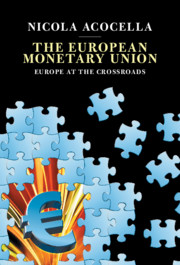Book contents
- The European Monetary Union
- The European Monetary Union
- Copyright page
- Dedication
- Contents
- Figures
- Tables
- Preface
- Acknowledgments
- Abbreviations
- Part I The Historical and Institutional Background
- 1 The Preparation of the European Economic and Monetary Union
- 2 The Institutions of the European Economic and Monetary Union
- 3 Theoretical Foundations and Practical Interests behind European Institutions
- Part II Institutions and Policies in Action
- Part III Lines of Reform of EMU Institutions
- References
- Index
2 - The Institutions of the European Economic and Monetary Union
from Part I - The Historical and Institutional Background
Published online by Cambridge University Press: 19 August 2020
- The European Monetary Union
- The European Monetary Union
- Copyright page
- Dedication
- Contents
- Figures
- Tables
- Preface
- Acknowledgments
- Abbreviations
- Part I The Historical and Institutional Background
- 1 The Preparation of the European Economic and Monetary Union
- 2 The Institutions of the European Economic and Monetary Union
- 3 Theoretical Foundations and Practical Interests behind European Institutions
- Part II Institutions and Policies in Action
- Part III Lines of Reform of EMU Institutions
- References
- Index
Summary
Chapter 2 describes the institutional background for the analysis of the imbalances that emerged over time, in Europe, which are central to our enquiry. The main aspect of the EMU institutions is their “incompleteness,” from the point of view of a more “mature” one, of the kind of a federalist structure. Incompleteness derives from a strong measure of persistent national, and thus, independent decision-making that interacts and overlaps with the few common institutions and often dominates over them. The EMU’s design is founded on a few common institutions, a single currency (to which a common macroeconomic policy has added recently) and the free operation of markets, as well as harmonization of some rules. All the other policy instruments are to be managed by the member states, with constraints on some policies, especially fiscal policy. Wage policy is completely disregarded. Thus, most national borders are maintained. In the mind of the founding fathers of the Union, these common institutions were necessary, and sufficient conditions for getting rid of frictions and the uneven distribution of resources and opportunities across the countries, thus resulting in a uniform process of growth of the whole Union.
Keywords
- Type
- Chapter
- Information
- The European Monetary UnionEurope at the Crossroads, pp. 27 - 67Publisher: Cambridge University PressPrint publication year: 2020

